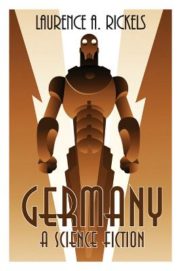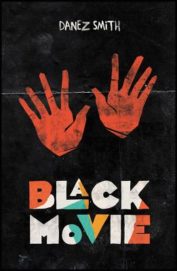 by Dylan Hicks
by Dylan Hicks
The great lexicographer, grammarian, and wit H. W. Fowler, quoted in Lee Konstantinou’s Cool Characters: Irony and American Fiction (Harvard University Press, $39.95), explained that irony required a “double audience” made up of “one party that hearing shall hear & shall not understand & another party that, when more is meant than meets the ear, is aware both of that more & of the outsiders’ incomprehension.” Fowler’s definition goes a long way, but considering that the word irony and its adjectival form have taken on manifold, often contested senses in formal and popular usage, one is forgiven for thinking that this highest form of polysemy is itself too polysemous to pin down. Konstantinou sensibly resists the urge to position irony as an all-encompassing condition of our age, but he productively uses it as a vantage point on postwar literature, culture, and counterculture. His approach is characterological. Irony, he holds with others, is a way of being, an ethos, and its recent history is best told through the types who pioneered new ironic worldviews or tried to establish post-ironic ones: the hipster, the punk, the believer, the coolhunter, the occupier. Though the book’s purview extends beyond literature, Konstantinou’s textual focus is on American fiction and criticism, with a few English guests. The book is especially concerned with irony’s political ramifications, and while it doesn’t deny the radicalism of some of its subjects, it disputes mythologies of a pure spirit of ironic opposition eventually co-opted and corrupted by market forces, instead pointing out where countercultural ironists were sometimes, unwittingly or otherwise, allies of their Establishment targets.
Konstantinou, who is also a novelist and editor, teaches at the University of Maryland, College Park. We conducted this interview by email in early May.
Dylan Hicks: Your first characterological study looks at the hipster as analyzed or depicted in key midcentury essays, novels, and stories, including Anatole Broyard’s 1948 essay “A Portrait of the Hipster,” Ralph Ellison’s Invisible Man, and Thomas Pynchon’s early work. Retrospectively, we tend to think that hip irony, either of or informed by jazz and the Beats, wasn’t just a foil but a real threat to Wall Street, Madison Avenue, the academy, the whole system that created Marcuse’s one-dimensional man and that would come under growing attack as the 1960s progressed. That’s not entirely wrong, though it’s also true that critiques of conformity, as books such as Barbara Ehrenreich’s The Hearts of Men remind us, came in a steady stream from the mainstream culture of the ’50s and early ’60s. And hipster taste—for Kafka, say, or abstract expressionism—would often overlap with those of modernism’s strait-laced exegetes and proponents, from the little magazines to the CIA. You focus on the hipster as both an adversary and a fellow traveler of Establishment New Critics. The hipster portrayed in Broyard’s essay, you point out, is rather like a literary critic; Ellison’s close study of the New Critics helped shape Invisible Man; and Pynchon’s “Entropy” was published in The Kenyon Review, famous as a New Critical mouthpiece. I hope readers will seek out your book for a detailed analysis of this relationship, but can you briefly describe where you found more affinity than opposition between these groups? What characterizes Pynchon’s “third ethos” of political irony,” a path laid out by one of V.’s minor characters, McClintic Sphere, an alto saxophonist patterned after Ornette Coleman?
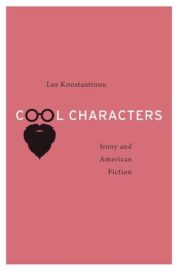 Lee Konstantinou: We tend to remember the midcentury hipster—the hipster of the 1940s and 1950s—as a type of person who stood athwart the Mainstream. He (and the hipster was usually imagined as a man) hated official culture. He subverted the Squares. Used irony to escape stifling categories and rigid ideologies. Was an enemy of Bureaucracy, the Administered Life, the System, the Man, WASP culture. That’s the heroic story we like to tell, anyway. When explaining why the hipster failed, many reach for what the historian and journalist Thomas Frank calls the “co-optation thesis.” The System defanged the hipster’s bold rebellion. The hipster sold out. And so on.
Lee Konstantinou: We tend to remember the midcentury hipster—the hipster of the 1940s and 1950s—as a type of person who stood athwart the Mainstream. He (and the hipster was usually imagined as a man) hated official culture. He subverted the Squares. Used irony to escape stifling categories and rigid ideologies. Was an enemy of Bureaucracy, the Administered Life, the System, the Man, WASP culture. That’s the heroic story we like to tell, anyway. When explaining why the hipster failed, many reach for what the historian and journalist Thomas Frank calls the “co-optation thesis.” The System defanged the hipster’s bold rebellion. The hipster sold out. And so on.
As you say, that’s not an entirely mistaken story. But my book’s first chapter argues for a different (or at least more complicated) view. Hip irony was very much in harmony with certain mainstream political tendencies. The critical knowingness we associate with the hipster resembles the kind of irony celebrated among prominent academics (the New Critics) and anti-Communist liberal intellectuals. Anatole Broyard's "Portrait of the Hipster," published in The Partisan Review in 1948, almost openly affirms the connection between the hipster and the critic; the two figures seem to merge in the essay. What I wanted to show more generally is that hip irony, spontaneity, authenticity, and individual freedom were in many cases simply the very same irony, spontaneity, authenticity, and individual freedom already widely celebrated among (mostly liberal) intellectuals. Indeed, reflecting Kennedy-era optimism, Arthur M. Schlesinger Jr. approvingly wrote in 1963 in The Politics of Hope that “[s]atire has burst out of the basements of San Francisco and Greenwich Village.” He was right.
Of course, just because they shared common ideas doesn’t mean that liberal intellectual culture and hip culture always saw eye to eye. The two were different social formations and were often at least rhetorically opposed to one another. What I call Pynchon's "third ethos of political irony" was one reaction to that conflict. Pynchon courted mainstream literary success (he wanted to publish in New Critical venues like The Kenyon Review) but he was also attracted to the emerging counterculture. Like many young writers, Pynchon felt the need to choose a side but also wanted to overcome the need to choose. I argue that he invented a new kind of irony—a sort of posthuman irony—that he hoped would overcome these opposed stances. As he wrote in the introduction to his collection of short stories, Slow Learner, he wanted to "sophisticate the Beat spirit." McClintic Sphere is the avatar for this "sophistication" in his 1963 novel, V. My discussion of V. returns to one of the old chestnuts of Pynchon criticism: the idea that Sphere's slogan "Keep cool but care" is the core maxim of Pynchon's first novel. A lot of critics want to read Sphere as warmly sincere, humane, nice, liberal. I try instead to show how Pynchon pushes hip culture toward a posthuman understanding of the human being. In V., the person comes to resemble something like a computer, and cultural/racial difference becomes a program running on that computer. Being an ironist means something like having the ability to program yourself.
DH: The book’s characterological study begins with two countercultural embodiments of irony—the hipster and the punk—then moves to the believer and the coolhunter, who sought or represented a postironic ethos. The method, I should clarify here, isn’t to cast writers to play the characters, but rather to find fictional creations and critical positions that enliven or illuminate the hipster, the punk, et al. That said, while reading your book and looking at the ironist through a characterological lens, I found myself trying to name still more characters who might overlap with notable postwar American ironists or postironists, particularly those more distantly or complicatedly connected to countercultures, wondering if the work and personas of Gore Vidal, Randy Newman, David Letterman, or Amy Sedaris could be placed in a characterological schema. Did you settle on the book’s characters early in writing and researching the book? Did you discard others?
LK: I didn't start with my character-based schema. I was drawn to certain writers: Ralph Ellison, William Gibson, David Foster Wallace. And I began with an intuition that postmodernism (whatever that was) had become something else. So I wanted to tell that story, the story of a transition away from postmodern culture, by tracking the fate of irony. I wanted to use the term “postirony,” which I felt described a growing tendency in American fiction, a tendency I most strongly associated with McSweeney’s (but not only McSweeney’s).
But I found it hard to explain why so many writers cared so intensely about irony—why they fought to overcome it. Then I read a Critical Inquiry article by Amanda Anderson that helped me organize the story I was telling. Anderson argued that pragmatist philosophers use a “characterological” rhetoric when defending their views. So someone like Richard Rorty didn’t just endorse irony; he endorsed the ironist as a type of person, as an ethos one ought to adopt and cultivate. There was a normative component to these arguments. I realized that the authors I was discussing were all doing a version of the same thing. David Foster Wallace’s wasn’t just saying that we should devalue irony; he also wanted us to become believers. Hell, Dave Eggers had started a magazine literally called The Believer. The solution to my organizational problems had been staring me in the face the whole time. Unlike the philosophers Anderson discussed, the literary writers I cared about didn’t just argue for this or that ethos. They promoted or denigrated their recommended attitudes through formal means, invented different experimental forms and genres to prosecute their cases. After I had that insight, it wasn't much of a leap to take those character types as the named objects of my analysis. So I organized each of my chapters around one type.
I should say that the types I am writing about should not be mistaken for empirical people. I’m not doing sociology or subcultural studies. Not doing biographical criticism. So sure, Gore Vidal, David Letterman, etc. have rich and interesting personas. Letterman in particular was often taken as a metonymy for ironic culture. But the figures I was interested in were way slipperier. If you dispute the value of being a hipster, if you’re writing a history of "the" hipster, you're not exactly discussing particular empirical people. While individual people might "be" hipsters, what you're really talking about when talking about the hipster is an idealization (albeit one always materialized in actual lives one way or another). The hipster necessarily appears as but ultimately also necessarily transcends specific people and discourses. Which means that the hipster’s many enemies can often have as much effect on what a hipster is as someone who self-identifies as a hipster. And different groups define what it means to be a hipster differently. So I wanted to find a way to talk about those disputes—to register that the hipster or the punk or whatever was never just one thing—while also recognizing that each of these types couldn’t be anything at all.
A lot of other plausible character types didn't make it into the book. I most regret not writing a chapter on debates about Camp. I also considered writing a chapter on postracial discourse, a chapter on the Cosmopolitan as a figure that aspires to global consciousness, and a chapter on the so-called Kidult (adults who cultivate a childlike sensibility and aesthetic). I also wish I could have written much more on the Bohemian, especially as this figure was imagined in the U.S. from the 1850s to the 1930s. But that might easily have become a whole other book. My manuscript was already 130,000 words long—that is, way too long. So maybe someday I'll write a prequel, although to be frank I’ve grown somewhat sick of my own characterological method at this point. No more character types for me for a while.
DH: In your chapter on punk, which treats the work of William Burroughs and Kathy Acker, you identify a realm of punk fantasy, “positive dystopia,” which you define as “an antihumanist or posthumanist, anti-Utopian genre that imagines human growth as arising not from destruction but precisely in destruction.” New York bohemia of the 1970s (and late ’60s) has provided the milieu for several recent and successful novels, memoirs, and histories. Responses to these books reflect nostalgie de la boue perhaps related to positive dystopia, as well as anger over neoliberalism, gentrification, and other forces that have since made the city prohibitively expensive for marginal artists and provincial dreamers. Have you spotted positive dystopias in texts outside the book’s ken, such as works that imagine a climate-changed future?
LK: The term "positive dystopia" is a pun on the Aldous Huxley’s phrase "negative Utopia" (although the phrase is also associated with Adorno, who gives it a different meaning). I don’t talk much about it in the chapter, but I was implicitly interested in the distinction that the literary critic Fredric Jameson makes between anti-Utopia and dystopia in his book on science fiction Archaeologies of the Future. An anti-Utopia is, on his account, conservative. It sees the desire and pursuit of Utopia as inherently destructive. The problem anti-Utopian authors identify isn't this or that negative political, economic, or social trend. It's the very desire to plan and organize a better society that comes under assault. Dystopias, by contrast, are necessarily Utopian to the degree that they hope we might avert disaster. Dystopias contain within them an at least tacit model of a better world.
I came to think of "positive dystopia" as a political photonegative of dystopia. It is a genre I saw as embodying the logic implicit in the punk slogan “No Future.” This genre is anti-Utopian to the degree that it identifies Utopian (and future-oriented) thought as one of its core opponents. So, for example, Kathy Acker talks about her desire to oppose hippie Utopianism in her fiction, interviews, and essays. To imagine Utopia was, in her view, politically problematic. Writing in a “positive dystopian” mode, Acker (like Burroughs before her) recognizes the present as an incarnated dystopia and then asks, "What now?" The genre’s answer is to imagine a way of slipping away from systems of control and domination. If you could return to the body, escape rationality, accelerate destruction, you might break through to something genuinely new or different or outside those control systems.
These ideas—widely popular ideas—endure in various forms, with different political valences. Neo-Bohemian celebrations of economically blasted zones continue (and continue to facilitate gentrification). The intellectual tendency called "accelerationism" has links to positive dystopia, too. Debates within queer theory about the politics of futurity invoke (and contest) this genre. Even the Occupy Movement was connected to this genre, although as in each of these cases with important differences. As was widely noted at the time, the first book placed in the Zuccotti Park library was Hakim Bey's T.A.Z.: The Temporary Autonomous Zone.
A lot of people are invested in seeing punk as ineradicably anti-capitalist, but my research led me to see it as much more akin to the DIY self-branding ethos that is absolutely dominant today. And Burroughs could not have been more clear: he loved the free market and hated the welfare state (which he warned would lead to Communism). The core ideas of the so-called godfather of punk are often hard to distinguish from the ideas of the founder of the Mont Pelerin Society, Friedrich Hayek. Now, the meaning of this genre is different today than it was in the 1970s. I don’t want to make it seem as if writing in the mode of “positive dystopia” automatically makes you a bedfellow of Milton Friedman. But it does suggest to me that far from being co-opted or destroyed punk, at least one prominent strain within punk, has enjoyed a considerable degree of authentic success.
DH: David Foster Wallace is the principal figure in your discussion of postirony. As his work makes clear, he wasn’t opposed to irony itself, but chafed against its depleted and depleting pervasiveness; if Joe Isuzu was an ironist, what oppositional power could irony still hold? And he saw the ironic disposition as emotionally stunting, an obstacle in his effort to combat loneliness by fostering writer-reader intimacy. Although he was writing against a certain aloof postmodernism, he was also of course extending part of the postmodern project, using metafiction and hyperarticulate self-consciousness to both thwart and restore emotional effects, in the way that stories such as John Barth’s “Lost in the Funhouse” and Gilbert Sorrentino’s “The Moon in Its Flight” used self-reflexivity to rouse erotic nostalgia from potential exhaustion. Wallace, you write, “attempts to help his reader adopt a stance of nonnaïve noncynicism by means of metafiction. What is paradoxical about this project is the emptiness of the proposed postironic belief. Postironists do not advocate a stance of belief toward any particular aspect of the world, but rather promote a general ethos of belief.” Might it be fair to say that this belief system is unspecified because it’s so broadly humanistic, Romantic, or Judeo-Christian, that it just calls for an unsuppressed faith in love, art, generosity, kindness, and so on?
LK: Well, you have to understand what Wallace thought he was fighting against. He argued that postmodern media and postmodern social relations had eroded our capacity to believe (and by “our” he largely meant highly educated U.S. citizens). The skepticism that postmodernists once directed toward specific hypocrisies had become generalized. And he worried he himself was no less susceptible than anyone else to this reflex. He feared his own fiction was devoid of love, generosity, kindness, etc., so Wallace was drawn to anyone who could neutralize this generalized incredulity.
We find a version of this argument in his 2000 Rolling Stone essay on John McCain. Wallace admits to hating McCain's conservative political views, but he also finds himself admiring that McCain could seem to be anything other than a slick or sleazy politician. That he could mean what he said—or seem to mean what he said—however awful the content of what he said was. I argue that Wallace wanted to rebuild our ability to believe, but he was often less interested in what we believe. How you feel about Wallace's project depends on whether you agree with his diagnosis of postmodern culture. If you don't think irony is a generalized malady, his solution will seem superfluous or unnecessary. If you care about what we believe (not that we believe), you might also find his project strange. (Although if you care about what we believe, you have to presume a well-functioning capacity to believe in the first place.) There’s also the (cynical) possibility that what we believe (or our capacity to believe) matters less than what we do. I found myself struggling with all of these reactions while writing about Wallace’s fiction and essays.
DH: One of the book’s chief interests is in puzzling out postwar irony’s political consequences, particularly the degree to which irony has been a demonstrable agent of political change from the left. On one hand, since irony inheres in postmodernism and critical theory, we can see how its continual questioning and inversion prodded activism and ideological shifts, though, as you write, the modernist account of irony often “presumes that critical knowledge leads to definite action without feeling much need to explain the mechanism by which it might do so.” On the other hand, irony can become the default stance of passive defeat, a carapace for one’s true sentimentality or banality (“Now-a-days,” as Wilde’s Lord Darlington says, “to be intelligible is to be found out”). The ironist might even resist sociopolitical change to preserve the conditions for his or her animus. To further entangle matters, not only does capitalism make everything vulnerable to co-optation, but some countercultural procedures—the punk’s DIY aesthetic, for one—proved readily adaptable to New Economy exploitation: the clever blogger, for instance, becomes the freelance writer remunerated with “exposure,” the bass player with a staple gun and a stack of flyers becomes the guerrilla marketer. Can you gloss how the occupier fits into this history? Is the unexpected success of the Sanders campaign another manifestation of postirony?
LK: The political significance of irony (and postirony) is complicated. Postmodernism always had different political valences. Scholars like Linda Hutcheon argued that postmodern irony provided the tools to question official stories and dominant ideologies. But, though it could be critical, it was also necessarily, as she put it, "complicitous." Yes, postmodernists criticized the world, but they knew that they could never be pure or stand outside the systems they hated. Other critics described postmodernists as conservatives who glibly discounted history, totality, etc. Conservatives hated postmodernism’s rejection of the canon, moral universals, and traditional authority. One of the most influential responses to this debate came from Jameson. His point was that deciding whether postmodernism is "good" or "bad" totally misses the point. Postmodernism—both the good and the bad—was just a name for the culture of contemporary capitalism. More specifically, it was the name for a moment in the history of capitalism when culture and the economy came together in historically unprecedented ways.
A version of this same struggle has occurred with the effort to renounce or transcend irony—and I tend to reach the same conclusion that Jameson did. As soon as you articulate a particular style or code or countercultural attitude, that code is immediately subject to appropriation and repackaging. The Occupy movement was no less subject to those forces. I document one ugly fight over the Adbusters poster, “The Ballerina and the Bull,” that I think illustrates these tensions or contradictions. And the Bernie Sanders campaign is no less subject to these concerns. If you travel through Vermont, for instance, you find Bernie merchandise everywhere. My favorite: “Feel the Bern” mango habanero jam. My temptation is to say that these fights, at some level, don’t matter very much. What matters isn’t whether your habits, tastes, customs, and practices have been decoded by marketers; what matters is whether your political commitments will help put the marketers out of business. Eat all the Feel the Bern mango habanero jam you want without guilt, so long as you help Bernie (or rather the political tendency he represents) build enough of a popular base to win power. And yet, to the degree that cultural politics (the politics of attitude and character) matter to people, they also matter politically—and must be engaged with. These are, I should say, political questions but also literary and cultural questions. As a cultural and literary critic what I care about is understanding why this cycle of stylistic rebellion-and-reabsorption exists, what has sustained it, how it is changing, what institutional changes might finally be needed to overcome it.
DH: In addition to being a scholar, you’re a novelist and editor. Have you developed systems for balancing this various work? Can you say anything about your current projects?
LK: I'm still learning how to balance these commitments. Every day is a mini-struggle. I'll work on one kind of project (say, academic writing) until I can't stand it anymore. Then I'll switch to editing or non-academic creative work. Then I'll get sick of fiction writing or editing and switch back. So my days often consist of erratic swings back and forth between very different projects. I just finished the second draft of a science fiction novel. I'm also working on a second academic book project called "Rise of the Graphic Novel." It's a project that emerges from my lifelong love of comics. All the "low" culture I grew up with—comics, science fiction, video games—has gone mainstream. I want to figure out how that happened and what it means. One common claim about postmodernism is that it eroded or demolished the discourse of “great” or “autonomous” art. That seems totally wrong to me: we live in an era where more and more forms, media, and genres are being elevated to the status of art. I tend to think of our moment as the age of Mass High Culture. It’s strange.
Click here to purchase this book at your local independent bookstore

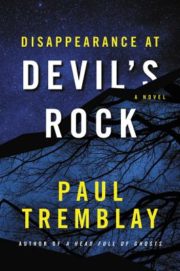 Paul Tremblay
Paul Tremblay
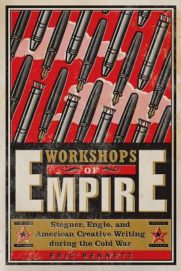
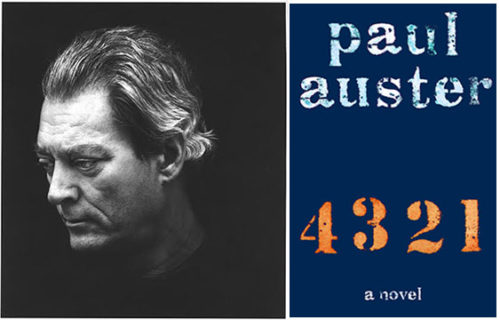
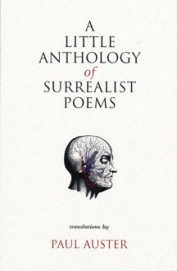
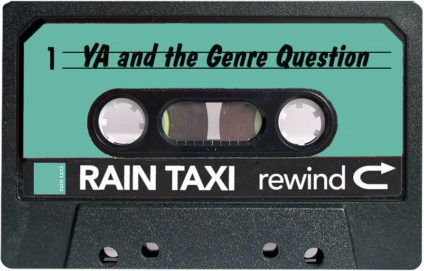
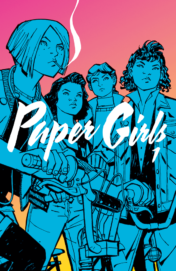
 by Dylan Hicks
by Dylan Hicks
